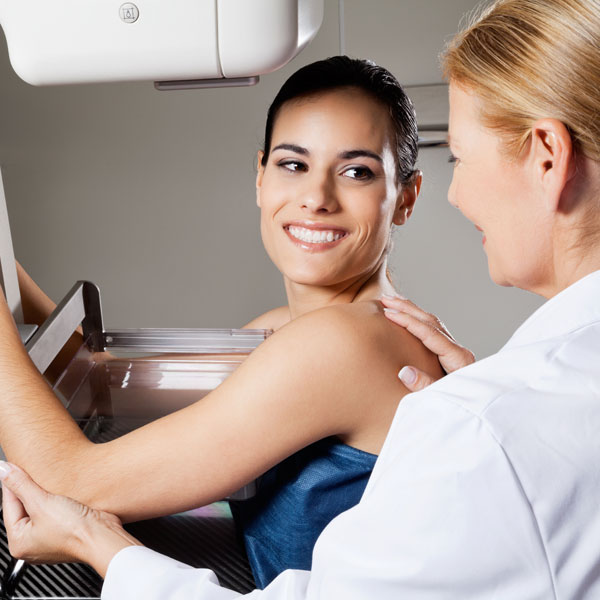Full Field Digital Mammography (FFDM)
Overview
Full field digital mammography, also known as “digital mammography”, is a mammography system where the x-ray film used in screen-film mammography is replaced by solid-state detectors, similar to those found in digital cameras, which convert x-rays into electrical signals. The electrical signals are used to produce images of the breast that can be seen on a computer screen, or printed on special films to look like screen-film mammograms.
FFDM differs from conventional mammography in that radiologists can manipulate images in a way that makes it easier to focus on and evaluate areas of concern.
Common Uses of the Procedure
Digital mammograms are used as a screening tool to detect early breast cancer in women experiencing no symptoms. They can also be used to detect and diagnose breast disease in women experiencing symptoms such as a lump, pain, skin dimpling or nipple discharge.
The American Cancer Society recommends that women with an average risk of breast cancer should have regular screening mammograms starting at age 45. Mammograms should be done every year for all women ages 45 to 54. Women age 55 or older can switch to mammograms every 2 years or continue to be screened annually.
Women’s Imaging Locations
Imaging Centers & Clinics
What to Expect
During a FFDM, a specially qualified radiologic technologist will position your breast in the mammography unit. Your breast will be placed on a special platform and compressed with a clear plastic paddle. The technologist will gradually compress your breast.
Breast compression is necessary in order to:
- Even out the breast thickness so that all of the tissue can be visualized
- Spread out the tissue so that small abnormalities are less likely to be hidden by overlying breast tissue
- Allow the use of a lower x-ray dose since a thinner amount of breast tissue is being imaged
- Hold the breast still in order to minimize blurring of the image caused by motion
- Reduce x-ray scatter to increase sharpness of picture
To get a variety of images, you will be asked to change positions. It is important that you remain as still as possible. Too much movement increases the risk of blurred images.
This process will be repeated for the other breast. The technologist will let you know if any additional pictures need to be taken. Full field digital mammography is performed on an outpatient basis and typically takes about 30 minutes.
If the screening results show an abnormality, you may need another type of breast evaluation such as ultrasound, 3-D mammogram, or biopsy.
Triad Radiology offers Womens Imaging at a variety of locations, including hospitals, imaging centers, and clinics. Contact us if you want to learn more or schedule an appointment.



